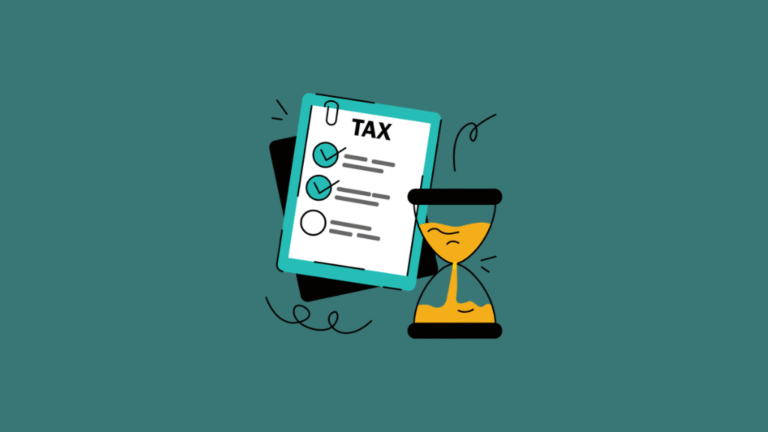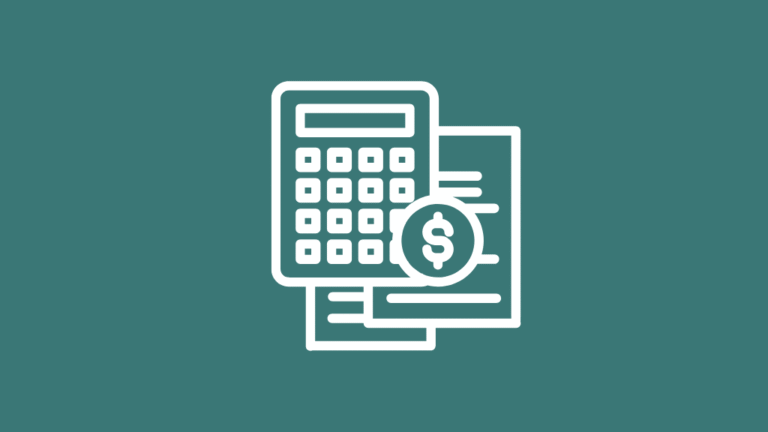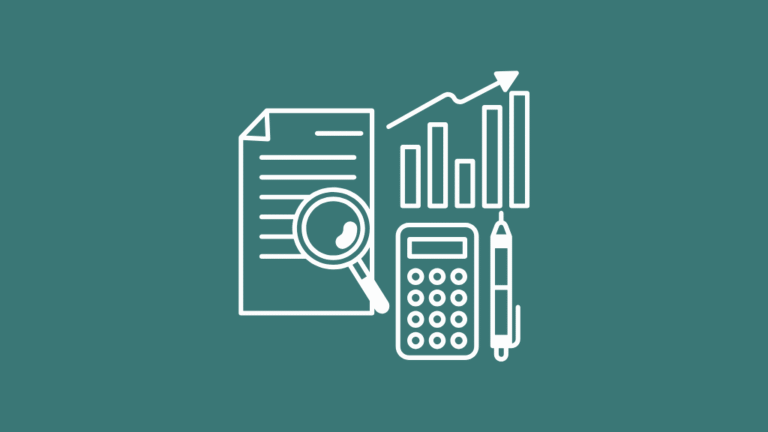Monthly Tax Preparation for Growing Businesses: A Complete Guide
Monthly tax preparation helps growing businesses stay compliant, avoid penalties, and improve cash flow. The National Small Business Association (NSBA) reports that one in three small firms struggle with last-minute filings and spend more than 40 hours a year on federal taxes. Monthly tax preparation maximizes deductions, avoids unforeseen liabilities, and guarantees correct records.
This guide explains why monthly tax preparation matters, the steps to implement it, and how it supports compliance.
What is Monthly Tax Preparation?
Monthly tax preparation is the process of collecting, reviewing, and organizing tax-related financial data every month, instead of waiting until the annual tax filing deadline.
It typically includes:
- Recording all income and expenses for the month
- Reconciling bank statements with accounting records
- Categorizing deductible expenses
- Estimating monthly tax liabilities
- Setting aside funds for tax payments
Monthly processing, as opposed to year-end tax preparation, distributes the workload evenly over 12 months and lowers the possibility of last-minute mistakes.
Why Businesses Are Adopting Monthly Tax Preparation
Several trends are pushing businesses toward monthly tax prep:
Regulatory Changes and Digital Tax Reporting
- United Kingdom: As part of Making Tax Digital (MTD), HM Revenue and Customs (HMRC) mandates digital record-keeping. Monthly tracking is crucial because many firms are required to submit their quarterly VAT reports online.
- United States: Companies that do not keep financial records for up to three years may be subject to penalties under IRC Section 6662, and IRS audits may demand them.
- Australia and Canada: Companies are compelled to maintain ongoing records due to the monthly or quarterly GST/HST reporting deadlines.
Avoiding Penalties and Interest
Penalties for late or inaccurate tax filings can be substantial:
- UK VAT Late Payment Penalty: Up to 15% of the VAT owed.
- IRS Late Filing Penalty: 5% of the unpaid tax for each month late, up to 25%.
- India GST Late Fees: ₹100 per day per Act, plus interest on unpaid taxes.
According to a 2023 National Small Business Association survey, 34% of small firms complete more than 40 hours of federal tax preparation each year; many of these businesses cite fines for rushing the process.
Supporting Business Growth and Investor Confidence
Investors and lenders require accurate, current financial records before approving funding. Monthly tax prep ensures:
- Up-to-date profit and loss reports
- Verified cash flow statements
- Tax compliance certifications
These records not only protect against legal issues but also demonstrate financial responsibility, boosting investor confidence.
Why is Monthly Tax Preparation Crucial for Growing Businesses?
Monthly tax preparation reduces errors, supports cash flow management, and ensures every deduction is recorded.
1. Avoid Costly Mistakes and Penalties
Financial fines and audits may result from faulty or late tax files. For instance, in the UK, late VAT return submissions can result in penalties that start at 2% of the outstanding balance. Monthly tax preparation guarantees on-time reporting and lowers the risks of:
- Income that was not reported
- Deadlines that were missed
- Ignored deductions
2. Maintain Consistent Cash Flow
Unexpected tax bills can disrupt payroll or supplier payments. Tracking taxes monthly allows businesses to:
- Estimate liabilities in advance
- Set aside funds in a tax savings account
- Prevent cash shortages during filing periods
3. Maximize Tax Deductions
Accurate expense tracking throughout the year ensures no deduction is missed. Common deductible categories include:
| Expense Category | Examples |
| Office Expenses | Internet, software subscriptions, stationery |
| Travel Costs | Airfare, fuel, hotel stays |
| Employee Benefits | Health insurance, performance bonuses |
Step-by-Step Process for Monthly Tax Preparation
1. Data Collection – Building the Foundation for Accuracy
Monthly tax preparation begins with gathering all relevant financial data from every source where transactions occur. This process is essential because tax accuracy depends on having complete, verifiable records.
Sources to Include:
- Bank Statements – Both current and savings accounts, ensuring all deposits and withdrawals are recorded.
- Credit Card Statements – Business cards often contain recurring expenses, travel costs, and subscriptions that may be deductible.
- Point-of-Sale (POS) Systems – For retail and hospitality businesses, these systems record daily sales, refunds, and discounts.
- Payment Processors – PayPal, Stripe, Square, or other merchant accounts that may hold pending or delayed settlements.
- Payroll Reports – Gross wages, employer contributions, and withholdings for income tax, social security, or pension schemes.
- Invoices & Receipts – Both issued (income) and received (expenses), in physical and digital formats.
- Loan and Lease Agreements – For interest deductions, asset depreciation, or lease payments.
Best Practices for Data Collection:
- Automate Where Possible – Use accounting software integrations to pull in bank, card, and POS data daily or weekly.
- Digitize All Paper Records – Use OCR (optical character recognition) tools to store receipts in searchable, compliant formats.
- Enforce Deadlines – Set internal cut-off dates each month for employees or departments to submit missing invoices or receipts.
- Audit Data Completeness – At month-end, verify that all transaction sources reconcile with reported figures.
2. Categorizing Expenses – Maximizing Deduction Opportunities
Once the raw data is collected, the next step is categorizing every transaction accurately. This ensures compliance with tax laws while identifying deductible expenses.
Common Tax Categories:
- Operating Expenses – Utilities, rent, internet, software subscriptions.
- Travel & Transportation – Flights, hotels, mileage, fuel.
- Employee Costs – Salaries, bonuses, health insurance, training programs.
- Office Supplies & Equipment – Stationery, printers, computers.
- Marketing & Advertising – Online ads, print materials, sponsorships.
- Professional Services – Legal, accounting, and consulting fees.
Why Categorization Matters:
- It ensures compliance with tax reporting standards (e.g., HMRC’s MTD in the UK or IRS rules in the US).
- It prevents overlooked deductions, which can significantly reduce taxable income.
- It supports faster audit readiness, as categorized transactions are easier to verify.
Practical Tips:
- Use accounting software with pre-set tax-compliant categories.
- Tag transactions with additional metadata (e.g., project name, client, department) for more granular reporting.
- Review expense categories monthly to catch misclassifications before they snowball.
3. Calculating Liabilities – Knowing What You Owe
Accurate liability calculation prevents surprises when payment deadlines arrive. Different taxes require different calculations:
Types of Liabilities to Calculate Monthly:
- Income Tax (Provisional/Estimated) – Based on current month’s profit and year-to-date performance.
- VAT or GST – Calculated as output tax (sales) minus input tax (purchases).
- Payroll Taxes – Includes both employee and employer contributions.
- Excise Duties – For industry-specific goods like alcohol, tobacco, or fuel.
Steps for Accurate Calculation:
- Reconcile all income and expenses to determine net profit or loss.
- Apply the relevant tax rates for each liability type.
- Factor in allowances, reliefs, or credits available for that month.
- Track payments already made to avoid overpaying.
Tip: Many businesses underestimate liabilities when revenue is rising. Always adjust estimates based on real-time performance, not outdated forecasts.
4. Setting Aside Tax Funds – Avoiding Cash Flow Shocks
A common reason businesses struggle at tax time is failing to reserve funds consistently.
Best Practices for Setting Aside Funds:
- Open a Dedicated Tax Account – Keep it separate from operational accounts to avoid accidental spending.
- Automate Transfers – Set a fixed percentage of monthly profit (e.g., 20–30%) to move into the tax account.
- Adjust Percentages Seasonally – If your business has seasonal revenue spikes, adjust contributions accordingly.
- Use Interest-Bearing Accounts – Earn passive income on reserved funds while they sit unused.
Why This Works:
Businesses that reserve tax funds monthly rarely face liquidity crises when quarterly or annual payments are due. It also prevents borrowing at high interest rates just to pay taxes.
5. Monthly Review Checklist – Staying Consistent and Compliant
A monthly tax preparation process is only effective if it’s consistent. Use a checklist to ensure nothing is missed:
Monthly Tax Preparation Checklist:
- Import and reconcile all financial transactions from banks, cards, and POS.
- Verify that all receipts and invoices are accounted for.
- Categorize all expenses in tax-compliant formats.
- Calculate all applicable tax liabilities.
- Transfer funds into a dedicated tax reserve account.
- Review any new regulatory updates affecting tax rates or filing processes.
- Conduct a brief audit to check for data anomalies or unusual expenses.
Bonus Tip: Schedule a recurring meeting with your finance team or tax advisor to review the month’s results. This keeps the process proactive rather than reactive.
Types of Taxes Managed Monthly
Monthly tax preparation involves different tax categories, depending on the country and business type. These can include:
- Value Added Tax (VAT): Common in the UK, European Union, and Australia. Many businesses file VAT returns monthly or quarterly. Under Making Tax Digital (MTD) in the UK, digital record-keeping and online submissions are mandatory.
- Goods and Services Tax (GST): Applicable in countries like Canada, India, and New Zealand. GST returns are filed monthly or quarterly, with businesses required to track input tax credits for eligible purchases.
- Income Tax (Provisional or Estimated): In the US and the UK (for corporation tax instalments), income tax may be paid monthly or quarterly. These payments are calculated based on projected annual profits.
- Payroll Taxes: In the US, this includes Federal Insurance Contributions Act (FICA) taxes, and in the UK, Pay As You Earn (PAYE). These are reported monthly or semi-monthly and cover both employer and employee contributions.
- Excise Duties: Industry-specific taxes on goods like alcohol, tobacco, and fuel. These are generally reported and paid monthly to relevant tax authorities.
How to Implement Monthly Tax Preparation in Your Business

Follow these structured steps to make monthly tax preparation efficient and error-free.
1. Use Accounting Software
Tools like QuickBooks, Xero, and FreshBooks automate income and expense categorization, generate tax reports, and integrate with banking systems.
Action steps:
- Choose software compatible with your business type and tax regulations.
- Automate categorization of transactions.
- Generate monthly reports to review liabilities.
2. Reconcile Bank Statements Monthly
Bank reconciliation helps detect duplicate entries, fraudulent transactions, or missed expenses.
Action steps:
- Match each bank transaction with accounting records.
- Correct errors immediately to prevent compounding issues.
- Enable automatic reconciliation where possible.
3. Allocate Tax Funds Regularly
Setting aside funds monthly avoids cash flow strain during tax season.
Action steps:
- Calculate a tax reserve percentage—commonly 20–30% of net profit.
- Open a separate savings account for tax reserves.
- Automate monthly transfers.
4. Consult a Tax Professional
Tax laws, including Making Tax Digital (MTD) in the UK or IRS updates in the US, change frequently.
Action steps:
- Partner with an accountant familiar with your industry.
- Schedule monthly or quarterly reviews.
- Seek guidance on deductions, tax credits, and compliance updates.
How Monthly Tax Preparation Differs from Annual Preparation
Monthly tax preparation and annual tax preparation serve the same purpose ensuring accurate tax reporting but they differ significantly in approach, timing, and benefits.
- Timing:
Monthly preparation involves tracking and updating tax-related records continuously throughout the year. Every month’s income, expenses, and liabilities are recorded and reviewed. Annual preparation, on the other hand, is a one-time compilation of all financial data at the end of the year, which often results in a rushed and stressful process. - Error Correction:
With monthly preparation, errors such as incorrect expense categorization or missing invoices are detected quickly often within 30 days allowing for immediate correction. In annual preparation, these errors may go unnoticed for months and can cause major discrepancies that require more time and effort to fix. - Cash Flow Management:
Monthly preparation allows businesses to set aside smaller, manageable amounts for tax payments throughout the year. This steady approach reduces the risk of sudden large tax bills that can disrupt operations. In contrast, annual preparation can result in a single large lump-sum payment at year-end, which can strain cash flow and affect the ability to cover regular expenses. - Compliance:
When businesses prepare taxes monthly, they can adapt to regulatory changes as soon as they occur. For example, if a government introduces a new VAT filing rule, the process can be updated immediately. Annual preparation usually means making all necessary adjustments at year-end, which increases the risk of non-compliance and penalties. - Audit Readiness:
Monthly preparation keeps records current, organized, and ready for inspection at any time. This is particularly beneficial if tax authorities conduct a surprise audit. Annual preparation often requires significant last-minute work to organize records, which can lead to missing documents and increased audit risk.
Common Challenges in Monthly Tax Preparation & Their Solutions
| Challenge | Solution |
| Lack of Time | Automate tracking with tax-ready software |
| Unclear Tax Rules | Consult a qualified tax professional |
| Cash Flow Issues | Save a set percentage of monthly revenue |
How Monthly Tax Preparation Supports Compliance
Monthly preparation ensures businesses remain compliant with evolving tax laws.
Key compliance benefits:
- Stay Updated: Quickly adapt to regulations such as MTD requirements.
- Avoid Fines: On-time, accurate filings prevent penalties.
- Simplify Audits: Well-organized records shorten audit timelines.
- Build Credibility: Demonstrates professionalism to stakeholders.
- Reduce Year-End Stress: Distributes the workload evenly across the year.
Future Trends in Tax Preparation
The landscape of business taxation is evolving rapidly due to advancements in technology, changes in compliance requirements, and the increasing demand for real-time financial insights. Understanding these future trends helps growing businesses remain competitive, compliant, and efficient in managing tax obligations.
1. AI and Automation in Tax Filing
Artificial Intelligence (AI) is no longer a futuristic concept in tax management—it is already transforming how businesses prepare, file, and review taxes.
How AI Benefits Monthly Tax Preparation:
- Automated Data Entry & Categorization – AI-powered accounting tools can scan receipts, invoices, and bank statements, then auto-categorize them into the correct tax codes.
- Error Detection – AI systems identify anomalies in transactions, such as duplicate entries or missing receipts, before they cause compliance issues.
- Smart Reminders & Deadline Alerts – AI-based assistants send timely alerts for tax payment dates and required filings.
- Adaptive Learning – Over time, AI learns your business’s unique expense patterns, improving categorization accuracy.
Example:
QuickBooks and Xero now integrate AI that suggests correct expense categories based on historical data, reducing manual entry time by up to 50%.
2. Blockchain for Secure Tax Records
Blockchain technology best known for powering cryptocurrencies is emerging as a reliable method for secure, transparent tax record-keeping.
Advantages of Blockchain in Tax Management:
- Immutable Records – Once data is recorded, it cannot be altered, preventing fraudulent financial entries.
- Real-Time Verification – Tax authorities could, in future, verify transactions instantly through blockchain-enabled ledgers.
- Simplified Cross-Border Taxation – Blockchain can streamline international tax compliance by providing transparent and timestamped transaction histories.
3. Predictive Tax Analytics
Predictive analytics combines historical financial data with statistical modeling to forecast future tax liabilities and cash flow needs.
Applications in Monthly Tax Preparation:
- Forecasting Tax Obligations – Businesses can anticipate quarterly or year-end liabilities based on current performance.
- Scenario Testing – Predictive tools can estimate how tax changes, expansions, or new product lines might affect liabilities.
- Cash Flow Planning – Knowing future tax obligations allows for better resource allocation.
Example:
A small manufacturing firm using predictive tax analytics could detect that increasing production in Q3 will raise VAT liability by 18%, enabling them to set aside additional funds well in advance.
FAQs
1. How does monthly tax preparation help with long-term business planning?It provides real-time financial insights, making it easier to forecast revenue, control expenses, and prepare for investments or expansions.
-
Can monthly tax preparation help in securing business loans or funding?
Yes lenders and investors value businesses with up-to-date, accurate financial records, which build trust and speed up approval processes.
-
How does monthly tax preparation reduce audit stress?
Organized monthly records allow quick access to documentation, reduce discrepancies, and make audits faster and less stressful.
-
What industries face the most risk if they skip monthly tax preparation?
Industries like construction, retail, e-commerce, and hospitality face higher compliance risks due to complex, frequent transactions.
-
How does monthly preparation assist with regulatory changes?
It ensures businesses can adapt immediately to new tax laws or rates, avoiding penalties and compliance delays.
-
Does monthly tax preparation improve supplier and vendor relationships?
Yes, timely payments and accurate cash flow forecasts strengthen trust and can lead to better terms or discounts.
-
How can small businesses start monthly tax preparation without big costs?
Use affordable accounting software, automate bank feeds, keep digital receipts, and set aside one day a month for review.
Wrapping Lines!
Monthly tax preparation is more than compliance; it’s a proactive way to protect and strengthen your business’s finances. Accurate, up-to-date records help you avoid penalties, maintain healthy cash flow, and make smarter decisions. From VAT and GST to payroll and income taxes, consistent preparation keeps you compliant and audit-ready all year. At Quilliam Marr, we simplify the process with expert guidance, advanced tools, and tailored strategies to fit your business needs. Let us handle the complexities so you can focus on growth. Start today and make tax season stress-free, every month.















